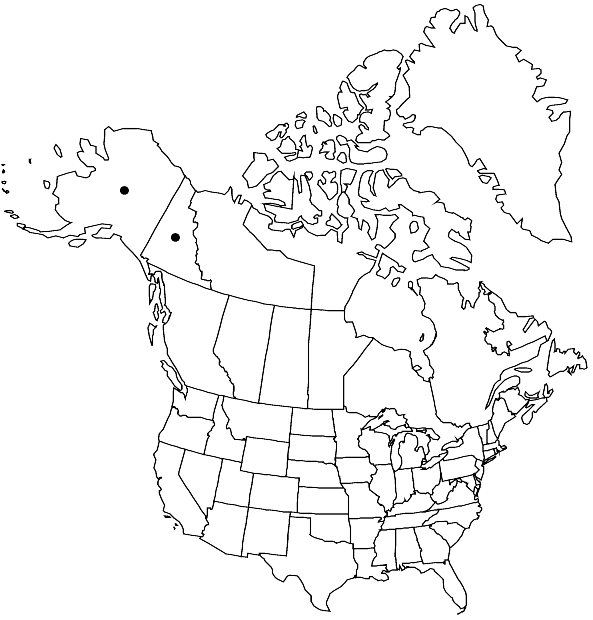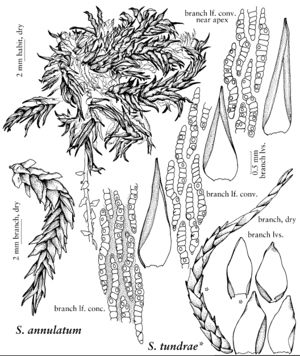Sphagnum tundrae
Lindbergia 19: 3, figs. 1–3. 1994,.
Plants small to moderately robust, green to yellow green, with a brownish tinge in hummocks; forms mats and cushions. Stems yellowish green with some brown bands; 2–3 layers of superficial cells. Stem-leaves shorter than branch leaves, 0.8–1.6 mm, lingulate, hyaline cells nonseptate above and commonly 1-septate below. Branches short and blunt, branch leaves imbricate. Branch fascicles typically with 2 spreading and 2 hanging branches. Branch stems with single layer of cortical cells. Branch leaves 0.9–2 mm, ovate, with conspicuously truncate apex, hyaline cells bulging on both surfaces, with 1–4 large circular to elliptic pores per cell on convex surface and 4–7 elliptic pores per cell on concave surface, internal commissural walls faintly papillose, cholrophyll cells elliptical to elliptical-ovate withn the broadest part typically some distance from convex surface. Sexual condition unknown.
Habitat: Forms mats and cushions in weakly minerotrophic arctic mires
Elevation: low elevations
Distribution

Yukon, Alaska, Europe
Discussion
Sphagnum tundrae can be separated from other species in sect. Squarrosa most readily by its truncate branch leaves.
Selected References
None.
Lower Taxa
"thinner" is not a number.
